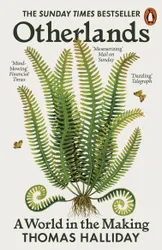In this book we are taken back through the various periods of Earth’s natural history and given a description of the life that existed at that time. Each description focuses on a particular place on the globe, and we get a wide variety of different environments throughout the book. The book starts close to the present day, with humans living on the planet, and travels further back with each chapter, so the plants and animals described become less familiar as the book progresses. Each chapter comes with a picture of the location in the context of how the continents were arranged at that time, and an illustration of one of the organisms described in that chapter. While these illustrations were useful in helping me to visualise some of the species described, there are several other plants and animals described in each chapter, and I found it hard to imagine what all of these looked like. In some cases I had to look up on the internet what certain things looked like. I think this book would be a lot more fun to read with an extra 2 or 3 illustrations per chapter.
The descriptions of each world are very detailed. We get a sense of the overall environment at that time, how it differed from the present day, and what interactions there were between the species around at that time. In some cases the time period was chosen to be just before a major extinction event occurred, so we gain an understanding of what caused these extinctions and what the effects were. Some of the locations were chosen because they are places where we have good fossil records, and the book covers many of the ways in which fossils are created. This does mean that we are not getting the full picture of life on the planet at any given time. Creatures that happened not to live in places where fossils were laid down simply wouldn’t have left any record of their existence.
Along the way, the book covers how the continents have shifted around, how the atmospheric composition and temperature have changed, and how these have affected the biology of the planet. In this way it covers some of the same ground as Revolutions That Made The Earth although not in as much detail as that book.
I was surprised to learn that most placental mammals only see in two colours (red and blue), having lost the need to distinguish additional colours due to a nocturnal lifestyle. Monkeys (including humans) later regained the ability to see green in order to distinguish between ripe and unripe fruit on trees. But the green was regained by copying the pigment that is sensitive to red and the way this is implemented genetically means that copying errors are common, especially in males. This is why red-green colour-blindness is common in human males.
The epilogue to the book is about climate change in the present day. Having seen several mass extinctions thoughout the book, some of them caused or accompanied by major changes to the climate, it makes sense to put these into the context of the changes that humans are inflicting on the planet. We are already in a mass extinction of our own making, and the composition of the atmosphere and climate are measurably changing. The book tries to strike a hopeful tone at the very end by saying that we have the power to prevent catastrophic climate change, but in presenting several examples of ways in which things are getting worse, it mainly served to remind me how serious our predicament is.
I really enjoyed reading this book. I found travelling back through Earth’s history and learning about the species that existed in the past fascinating, and I found the descriptions very evocative of those times and places. I do wish there were more illustrations of the plants and animals to help me imagine what life was like. What I liked most was considering the environment as a whole at various points in history, and the ecosystem as the interactions between various different species. The book does a really good job of making these times and places seem very different from our own time, and from each other.
